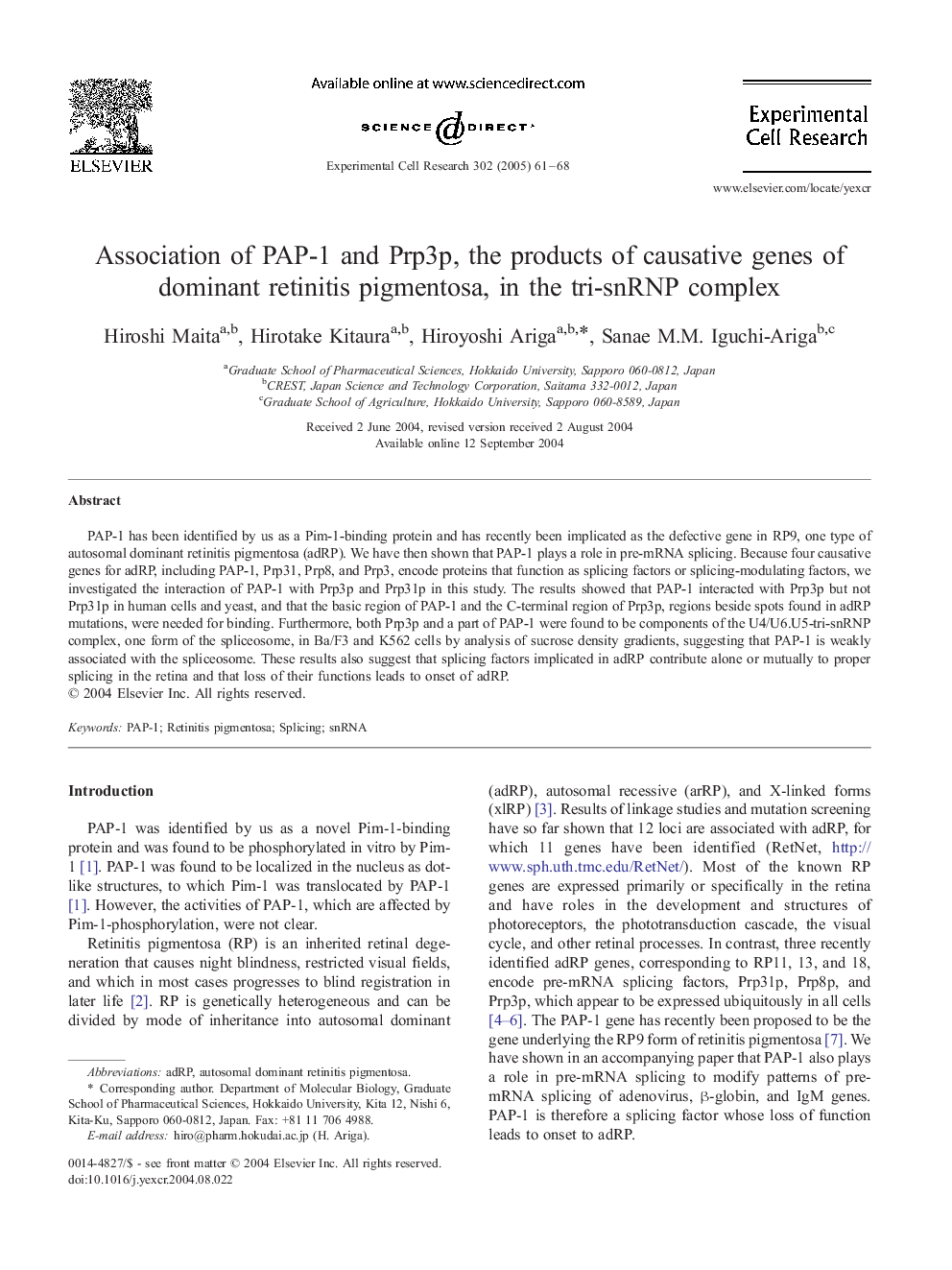| Article ID | Journal | Published Year | Pages | File Type |
|---|---|---|---|---|
| 10905656 | Experimental Cell Research | 2005 | 8 Pages |
Abstract
PAP-1 has been identified by us as a Pim-1-binding protein and has recently been implicated as the defective gene in RP9, one type of autosomal dominant retinitis pigmentosa (adRP). We have then shown that PAP-1 plays a role in pre-mRNA splicing. Because four causative genes for adRP, including PAP-1, Prp31, Prp8, and Prp3, encode proteins that function as splicing factors or splicing-modulating factors, we investigated the interaction of PAP-1 with Prp3p and Prp31p in this study. The results showed that PAP-1 interacted with Prp3p but not Prp31p in human cells and yeast, and that the basic region of PAP-1 and the C-terminal region of Prp3p, regions beside spots found in adRP mutations, were needed for binding. Furthermore, both Prp3p and a part of PAP-1 were found to be components of the U4/U6.U5-tri-snRNP complex, one form of the spliceosome, in Ba/F3 and K562 cells by analysis of sucrose density gradients, suggesting that PAP-1 is weakly associated with the spliceosome. These results also suggest that splicing factors implicated in adRP contribute alone or mutually to proper splicing in the retina and that loss of their functions leads to onset of adRP.
Related Topics
Life Sciences
Biochemistry, Genetics and Molecular Biology
Cancer Research
Authors
Hiroshi Maita, Hirotake Kitaura, Hiroyoshi Ariga, Sanae M.M. Iguchi-Ariga,
